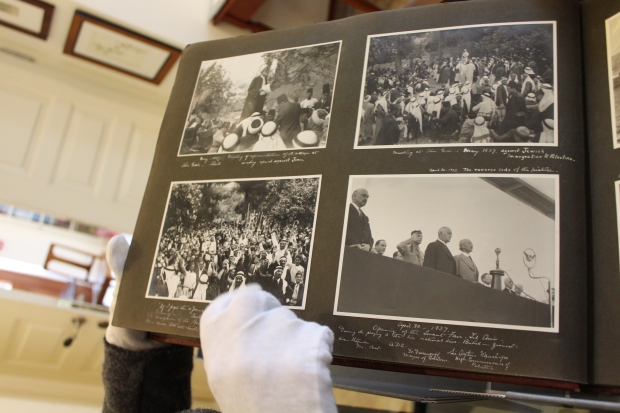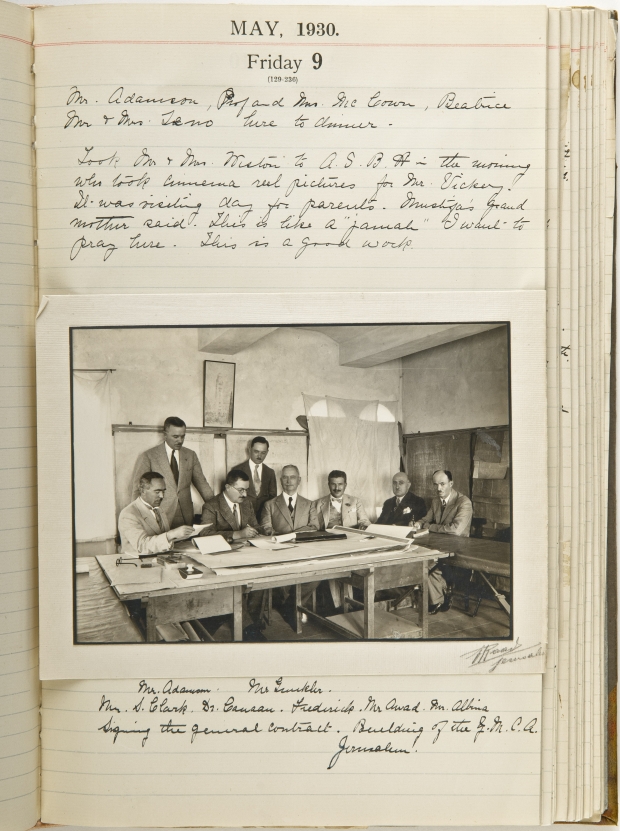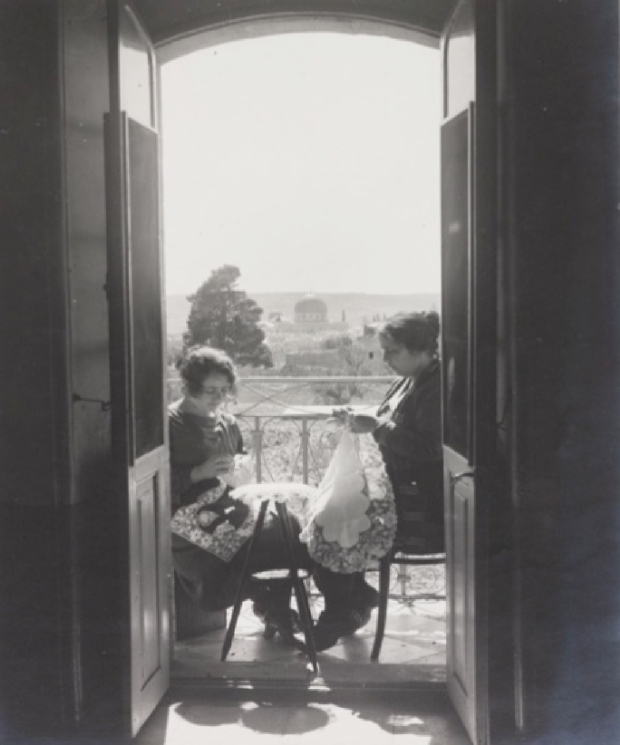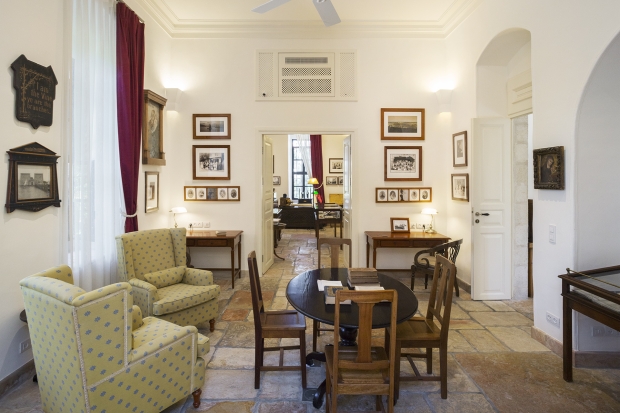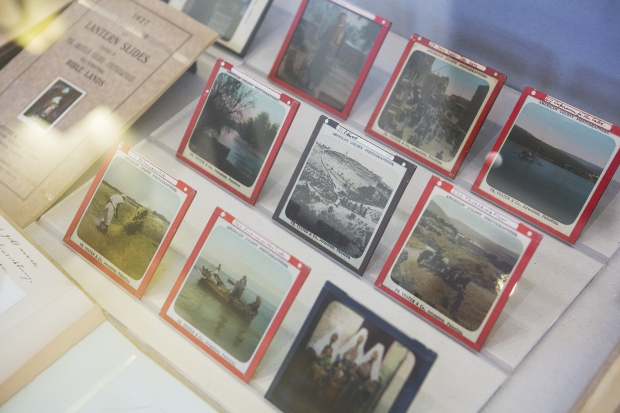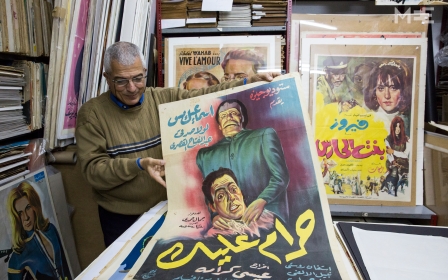Jerusalem's religious pilgrims who built a photographic empire
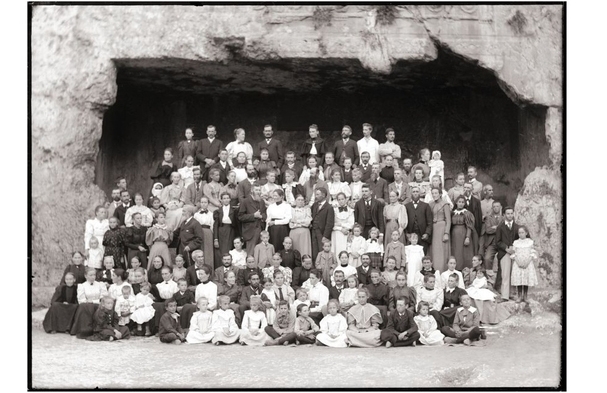
JERUSALEM, Palestine - Hotel bedroom decor does not usually give guests a history lesson, but at the American Colony Hotel in East Jerusalem, photographs telling the story of the city’s early and intense 20th-century history adorn nearly every wall.
These are not run-of-the-mill stock photos and the photographers that took them were not your average shutterbugs. Wrapped up in the countless images on display are the stories of the photographers themselves, pilgrims who came to Jerusalem and created a photographic empire in the unlikeliest of places - their religious commune.
Today, the American Colony, which maintains a reputation as one of Jerusalem’s most upscale hotels, is taking great strides in preserving the legacy of these photographers on the grounds where they lived and worked.
From religious pilgrims to photography experts
Curator Rachel Lev has been trolling through the attics and back rooms of the American Colony for the past eight years, organising and cataloguing every community artefact she comes across.
The American Colony traces its roots back to 1881, when prominant lawyer Horatio Spafford and his wife Anna, made their way from Chicago to Jerusalem to live in a devout Christian community with 16 like-minded pilgrims. By the mid-1890s, an influx of Swedish, American, and Swedish-American Christians joined the Spaffords, and the community moved north of the Old City into the grand, former residence of Rabbah Effendi al-Husseini, a high-ranking official from the Ottoman era.
It was here that the community began to experiment with commercial self-sufficiency, and the photography department was born.
“In 1897, they were already starting to distribute photographs,” Lev said of the fledgling operation, which was spearheaded by East Indian immigrant and Christian convert Elijah Meyers. “And the distributor was Ferdinand Vester in his [Jaffa Gate] shop. It was only passed to the American Colony in 1902. This was mainly the beginning, and then in 1907, we have the written evidence that they were producing about 20,000-24,000 photographic prints in a tourist season and about 2,000 glass lantern slides.”
The department operated from 1898 through to 1934, with somewhere around 15 photographers focusing their energies on an array of photographic genres.
After gaining commercial momentum in 1898 by selling news photographs of German Kaiser Wilhelm’s visit to the Holy Land, teams of photographers began travelling the Levant, selling images to National Geographic. Others focused on documenting the life and work of the Colony members, and creating meticulously detailed landscape tableaus to sell to tourists.
“There were many photographers, and they didn’t feel obliged to any of the political forces at play,” Lev said. “Their documentation and their creative work, which is also art photography, is unique in the way that it sets the Middle East before Zionism. In a way, you can rewrite the history of the Levant before Zionism through the American Colony photography, if you can read the photographs as stories.”
Despite their prolific output, which included hand-coloured prints, postcards, stereographs, panoramic images and glass lantern slides, the photographers seemed to document everything but how they worked themselves. Lev and other scholars are still discovering how the photographers functioned, both independently and in groups.
"Funnily enough, we don’t have any diaries about how the photo department operated, which is a big mystery, but we know that they documented everything else,” Lev said. “In my mind, I imagine that in the photo department, they probably had a room in which they painted photographs, and how Lewis Larsson is standing and looking at the person who is painting the photograph and they would exchange ideas.
"There was a very big creative process going on. If you think today of the effort that has to go through the printing and then the sitting and the slow process of watercolour painting, it could have taken days, even weeks."
Creating the collection
The collection, which keeps growing as Lev continues her research and receives donations, is housed in one of the American Colony outbuildings, known as the Palm House. It is decorated with photographs in original, carved frames, and handicrafts and viewing cases made by the American Colony's original members. The archive’s central, antique table, where Lev greets visitors and researchers, can even be seen in some of the early photographs hung around the room.
"One of the highlights of the collection, as it is today, is the photographic album collection, because it is the largest known American Colony photographic album collection in the world, and it is unique in that it portrays both their own life as a community and the complete Levant,” Lev says.
“There are about 22 family albums, and there are about 40 or more thematic albums, and it’s so interesting because these albums were narrated, meaning somebody sat and arranged them and chose the photographs out of many more negatives, and edited the captions in real time. So it’s already sort of selective observation on what they did."
Paul Vester, a descendant of the founders, heads up the hotel’s current board of directors and also makes his residence in the Palm House when he is in Jerusalem. When he was appointed, he saw that the potential in the hotel’s scattered holdings, and named Lev as the chief curator.
“The photographs were always magical,” Vester said on a recent visit to the hotel. “We could see that they were really good pictures. People were always interested. We always used to sit and look through the albums and talk about it, but it wasn’t until we really started the archive that we started seriously talking about which individuals took which pictures, and that’s very interesting. And you can tell, they had different styles.”
Maintaining independent ideas
In creating the archive space, both Lev and Vester hope that researchers will take advantage and access the original materials.
A large collection of American Colony photographic material, donated by former American Colony photographer G Eric Matson in 1966, also currently resides in the Library of Congress in Washington DC. But it is the aim of the American Colony archive to help keep their material on the premises, where it is imbued with more spatial meaning.
“Here, it is accessible. East Jerusalem is very poor in terms of original photography from this period because of the conflict. And to be able to create this, in this place, is really a miracle,” Lev said. “I think once the archive becomes more independent and can have more works and more research and so forth, people will understand how important it is to keep it here. You have to create a panoramic view, to be able to rebuild historical narratives.”
“My idea is to bring up stories that help to reshape the history of this place,” Lev added. “Things that young Palestinians can identify with.”
Down the street in East Jerusalem, Lev has an ally in another unique photography collection – that of the Ecole Biblique and Archeologique Francaise de Jerusalem. Jean-Michel de Tarragon has overseen the photography collection there for the past 15 years, and agrees with Lev that it is important for historical collections, of varying origins, to maintain their independence.
“To have an independent, private archive, gives huge freedom,” de Tarragon said. “We are not depending on political, we are not depending on the administration pressure of the government, we are not under any programme from the Ministry of Culture, which can change. With a private archive, you can keep one direction, and keep it many years.”
Luckily for the American Colony, Vester is a committed director who also sees the cultural value in the growing archive, and is just as committed to maintaining its independence.
“It is important to keep the collection where it was,” Vester said. “In the Library of Congress, it’s kind of locked away. Here it is much more accessible, where it all means much more. It means something quite different here, and it should be here.”
This article is available in French on Middle East Eye French edition.
Middle East Eye propose une couverture et une analyse indépendantes et incomparables du Moyen-Orient, de l’Afrique du Nord et d’autres régions du monde. Pour en savoir plus sur la reprise de ce contenu et les frais qui s’appliquent, veuillez remplir ce formulaire [en anglais]. Pour en savoir plus sur MEE, cliquez ici [en anglais].


